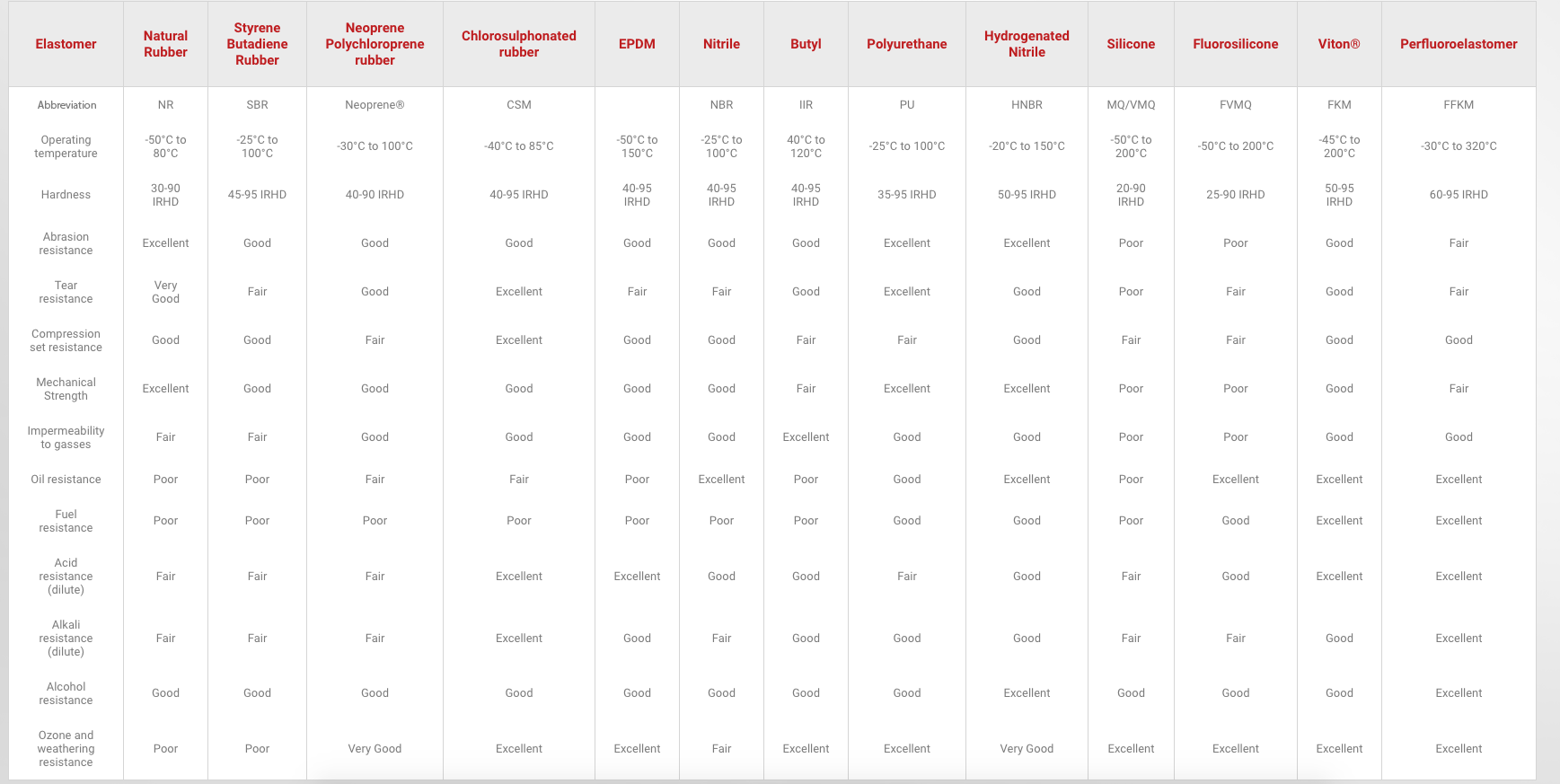Find the most appropriate ‘O’ ring size for your application.
Neoprene Material Information
TRP Polymer Solutions offers a wide range of high-performance seal materials. Our highly skilled technical experts are adept at formulating innovative sealing solutions, overseeing the development of your product from the design stage through to full production. We can recommend the most appropriate polymer material for your sealing application, providing a functional, durable and reliable seal product.
One of the versatile polymer materials that we work with at TRP Polymer Solutions is neoprene. This synthetic rubber is a suitable seal material for applications requiring a general-purpose material that is durable, waterproof, thermally stable and reasonably chemical resistant. Like all polymer materials, there are pros and cons to using neoprene. Read on for a full overview of the advantages, disadvantages and typical applications of neoprene.
What is neoprene?
Neoprene (CR) is the DuPont trade name for chloroprene, a versatile synthetic rubber. Neoprene rubber is produced through the polymerisation – linking single molecules into multiple-unit molecules – of chloroprene. This process creates polychloroprene chips which are melted and mixed with various foaming agents and carbon pigments before being baked until the mixture expands to create sheets of neoprene. It is sold either as solid rubber or in latex form.
Advantages of neoprene
Neoprene’s waterproof and corrosion resistant properties make it resilient to a range of environmental factors, including UV, ozone and oxidation. Neoprene’s good thermal stability means it remains flexible over a wide temperature range of -40 °C to +120 °C.
Neoprene rubber also exhibits good all-round chemical resistance and is not unduly affected by a range of common chemicals, including solvents, oils and petroleum-based fuels. Neoprene is also durable, tear resistant and adheres easily to metals and fabrics. Some compounds are also flame resistant.
Disadvantages of neoprene
The primary disadvantage of neoprene is its cost. Several other materials offer similar characteristics at a lower price. Neoprene also offers poor resistance to strong oxidising acids, esters, ketone and certain hydrocarbons. Other rubber materials deliver superior oil resistance. Neoprene can absorb water over time and is not recommended as an electrical insulator.
Neoprene applications
Neoprene rubber is extremely versatile and therefore used in many different products. It does not degrade as quickly as natural rubber, making it ideal for gaskets and hoses. Neoprene is most commonly used in wetsuits due to its insulating properties.
Other typical uses for neoprene rubber include the following:
• Wire and cable insulation
• Belts
• Springs
• Flexible mounts
• Gaskets
• Adhesives
Frequently asked questions about neoprene
When was neoprene invented?
Following increased demand for natural rubber and the subsequent price rise in the 1920s, scientists set out to create a cheaper synthetic alternative. Not for the first time, DuPont made the breakthrough required to create one of the first successful synthetic rubbers.
In 1930, an American chemist named Arnold Collins, who was part of DuPont’s research group, made his discovery after Investigating the by-products of divinylacetylene (the vinyl derivative of acetylene). After World War II, DuPont invested in a neoprene plant to meeting the increasing demand for neoprene rubber.
How is neoprene made?
The technical name for neoprene is polychloroprene. This foamed synthetic rubber is primarily composed of carbon and hydrogen atoms and is made through a chemical reaction using chloroprene. The result of which is polychloroprene chips that are melted and mixed with various carbon pigments and foaming agents. The subsequent material is then oven baked until it expands to form neoprene, which is then sliced to create neoprene sheets of varying thicknesses.
Is neoprene waterproof?
Neoprene foam can be produced in either open-cell or closed-cell form. Closed-cell neoprene is waterproof due its nitrogen content, with miniscule gas pockets providing excellent insulation.
Where to buy neoprene rubber seals
TRP Polymer Solutions is an industry-leading manufacturer of high-performance neoprene rubber sealing components. We develop a comprehensive selection of sealing products from every type of polymer material imaginable, including neoprene.
For advice and guidance about our various ‘O’ ring materials – including neoprene rubber – or to discuss your application requirements in more detail, contact TRP Polymer Solutions today on +44(0)1432 268899 or email sales@trp.co.uk.





